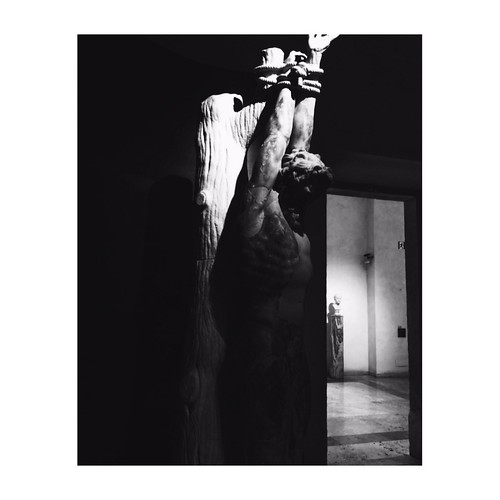That a few of the reductions can be because of the reduce sensitivity of Higher Arctic plant communities to warming than these within the Low Arctic or Higher Arctic communities could even be resistant to climate alter. However, a complicating element was lowered availability of water during the summers brought on by deepening of the active layer. Furthermore, there was little sign from the marked expansion of shrubs located in the majority of the Low Arctic (Walker et al. 2006) but musk oxen grazing (Forchhammer et al. 2005) as well as the fairly quick periodFig. 7 The ratio of strontium isotopes with depth in soils on the most recent glaciation close to Toolik Lake (major). Strontium isotope ratios in the inlet MedChemExpress Talarozole (R enantiomer) stream to Toolik Lake over time (bottom). Original data from Keller et al. (2007, 2010). Figure modified from Kling et al. (2014)over massive areas of the watershed, it’s uncertain precisely how much of your thaw occurred uniformly throughout the watershed and just how much beneath new water-flow pathways. The weathering and water movement in the soil that led to both the raise in alkalinity as well as the lower in strontium isotope ratios also integrate the chemical signal more than various years. This integration happens due to the fact a number of the alkalinity that is certainly produced in 1 year remains within the soil water in the finish with the summer time and is not released until the thaw from the active layer the subsequent summer time. By way of example, Everett et al. (1996) measured the Ca2 in soil water for 22 days in August and found an typical of 31.four lEq L-1 in overland flow (n = three), 79.8 at 20 cm depth (n = 21), and 112 lEq L-1 at 40 cm (n = 21). Rainfall each and every fall ensured that the active layer was saturated in the starting of every winter (Hinzman et al. 1996). PubMed ID:http://www.ncbi.nlm.nih.gov/pubmed/21302868 The subsequent spring, most of the runoff from the watershed occurred from snowmelt inside the spring as  surficial runoff when the active layer was nonetheless frozen (Woo and Steer 1983). The ions which might be a element on the soil water are not released till the thaw depth deepens later inside the summer season (Cornwell 1992). At Zackenberg (Christiansen et al. 2008), twenty lakes showed no change in chemical conductivity when monitored twice (1997 and 2003). Two of those lakes also showed no modifications when monitored just about every year from 1997 to 2003. It’s not known if weathering of the previouslyThe Author(s) 2017. This article is published with open access at Springerlink.com www.kva.seenAmbio 2017, 46(Suppl. 1):S160SFig. eight The amount of hits per plot of various vegetation growth forms in the Imnavait Creek and nearby Toolik grids. There had been a total of 156 plots each sampled four instances from 1989 to 2008. The letters above the bars indicate significant differences even though error bars represent regular errors. Statistical variations determined via MANOVA with Tukey’s B post hoc test to determine significant differences amongst years (p \ 0.01). Figure redrawn from Shaver et al. (2014). Original information from Mercado-Diaz (2011)of observations could possibly make it hard to measure any expansion. NDVI measures of plant biomass NDVI for the Toolik area in northern Alaska The NDVI with the Toolik region (Fig. 9) measures a region of tussock-sedge, dwarf-shrub, and moss tundra on the CircumArctic Vegetation Map (Walker et al. 2005). Involving 1982 and 2014, the peak season NDVI ( SD) considerably improved by 29 , from 0.56 to 0.72 (.055) (p\0.001). For the identical period as the point-frame measures of biomass (1989008), the NDVI enhanced by 17 , which can be close towards the point-frame values of a 19 raise in.
surficial runoff when the active layer was nonetheless frozen (Woo and Steer 1983). The ions which might be a element on the soil water are not released till the thaw depth deepens later inside the summer season (Cornwell 1992). At Zackenberg (Christiansen et al. 2008), twenty lakes showed no change in chemical conductivity when monitored twice (1997 and 2003). Two of those lakes also showed no modifications when monitored just about every year from 1997 to 2003. It’s not known if weathering of the previouslyThe Author(s) 2017. This article is published with open access at Springerlink.com www.kva.seenAmbio 2017, 46(Suppl. 1):S160SFig. eight The amount of hits per plot of various vegetation growth forms in the Imnavait Creek and nearby Toolik grids. There had been a total of 156 plots each sampled four instances from 1989 to 2008. The letters above the bars indicate significant differences even though error bars represent regular errors. Statistical variations determined via MANOVA with Tukey’s B post hoc test to determine significant differences amongst years (p \ 0.01). Figure redrawn from Shaver et al. (2014). Original information from Mercado-Diaz (2011)of observations could possibly make it hard to measure any expansion. NDVI measures of plant biomass NDVI for the Toolik area in northern Alaska The NDVI with the Toolik region (Fig. 9) measures a region of tussock-sedge, dwarf-shrub, and moss tundra on the CircumArctic Vegetation Map (Walker et al. 2005). Involving 1982 and 2014, the peak season NDVI ( SD) considerably improved by 29 , from 0.56 to 0.72 (.055) (p\0.001). For the identical period as the point-frame measures of biomass (1989008), the NDVI enhanced by 17 , which can be close towards the point-frame values of a 19 raise in.
